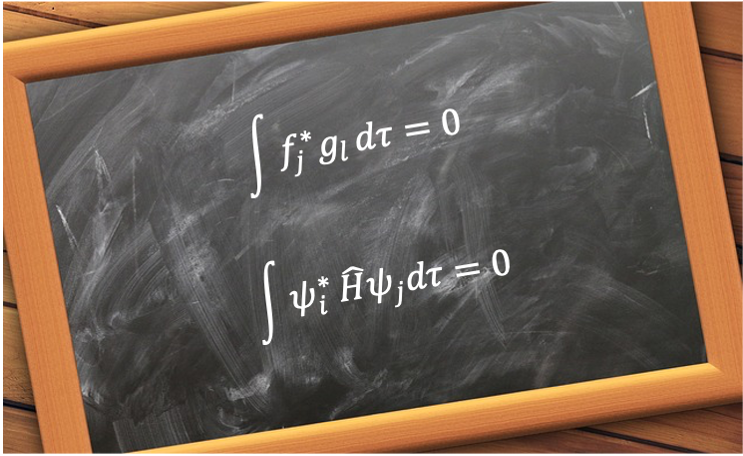A vanishing integral is a continuous sum of a function that evaluates to zero. Group theory allows us to identify a vanishing integral as a result of the symmetry of the system.

Consider a set of basis functions that transforms according to a representation
of a point group
. The integral of an element of the function
is a scalar, which is invariant to any symmetry operation
of the coordinate system, i.e.
Since there are number of symmetry operations of
, we can write
equations of eq82 and sum them to give
Let , where
and
belong to the sets of linearly independent functions
and
respectively, and where
and
are bases for the irreducible representations
and
respectively of
. Substituting
and eq77i in eq83,
Rewrite eq20 as and substitute it in eq84 to give
We conclude that:
|
Rule 1 |
If |
This implies that basis functions belonging to different non-equivalent irreducible representations are orthogonal. With respect to eq76 and eq77i, if transforms according to the totally symmetric representation of
and
transforms according to a different irreducible representation
of
, then
must transform according to
, which is obviously not the total symmetric representation of
. Therefore,
| Rule 2 | If a function transforms according to an irreducible representation that is not the totally symmetric representation of a group, its integral over all space is necessarily zero |
Next, we look at the quantum-mechanical integral , where
and
are wavefunctions and
is a quantum-mechanical operator, which is also a function.

Question
Why is an operator a function?
Answer
A function is a mapping of each element of the set
in one vector space of functions
to one element of the set
in another vector space of functions
, which may be the same space as
. Similarly, an operator maps each element (e.g. a wavefunction) of a vector space of functions
to another element in another vector space of functions
, which may be the same space as
.
Due to rule 1, is necessarily zero if
and
transform according to two different non-equivalent irreducible representations. Let’s consider the integral
, where
,
and
transform according to the irreducible representations
,
and
respectively of a group
. Since the non-relativistic Hamiltonian
is invariant under any symmetry operation, it transforms according to the totally symmetric irreducible representation of
. With reference to eq76 and eq77i,
consequently transforms according to
. Therefore,
if
.

Question
Do the integrals and
vanish in a
molecule?

Answer
is totally symmetric, while
and
transform according to two different non-equivalent irreducible representations
and
respectively. Therefore,
. Using eq76,
transforms according to
. Hence,
is not necessarily zero.
